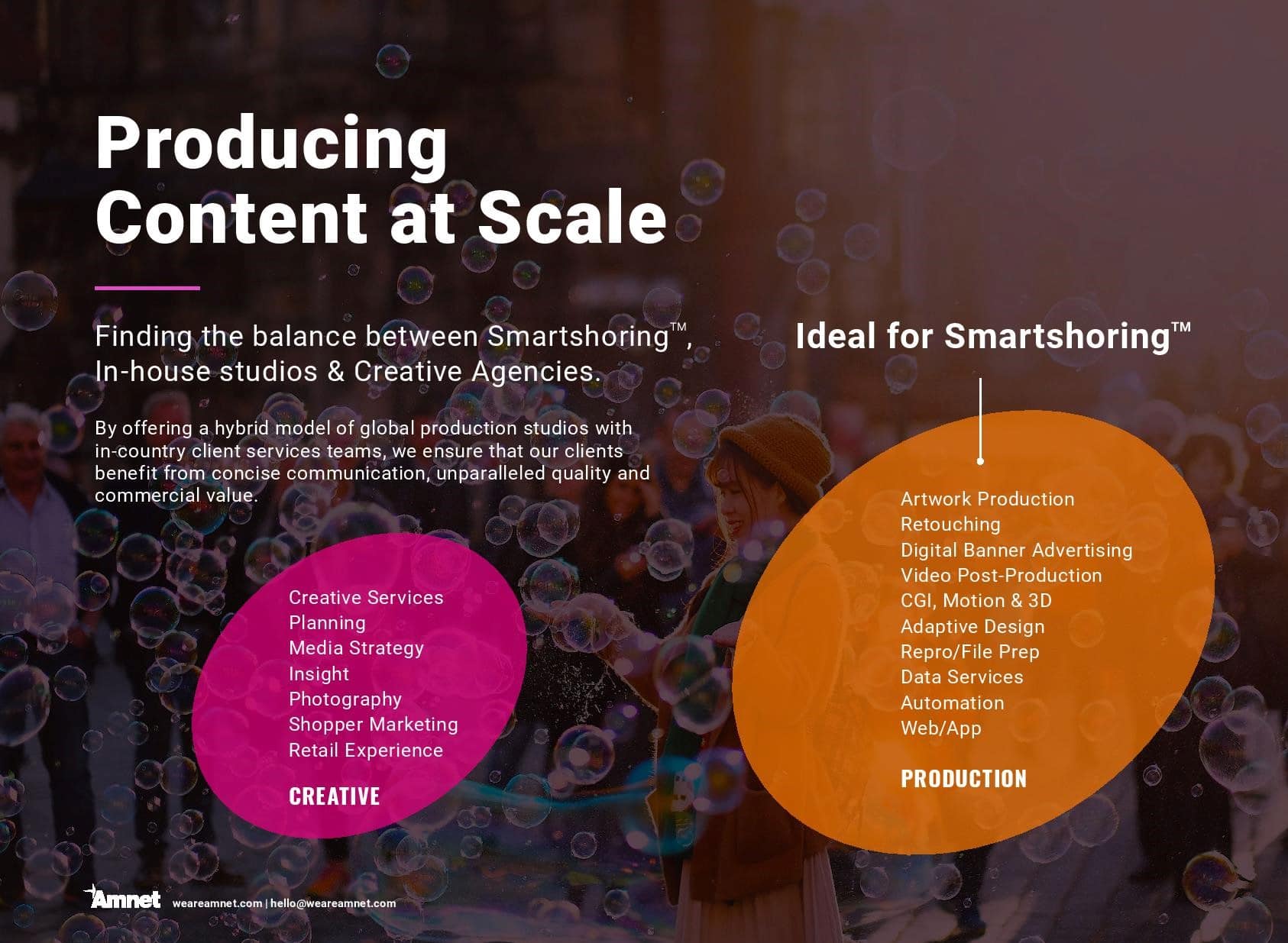Shelley Harrison, Senior Marketing Manager at Amnet, explains how creating content at scale is about maximising your resources, finding those efficiencies and adopting the right model and blend of partners that works best for your business.
The success of marketing today lies in the level of knowledge brands have about their audience, and with personalisation, dynamic and custom content at the top of most marketeers’ agendas and with digital content superseding all other channels, this is becoming increasingly challenging.
Throw in the added complexity of multi-networking as social media users now access on average eight social networks and messaging apps per day, and the outcomes are clear – content has to be more relevant engaging and consistently represented than ever before.
Creative teams on average produce 28 pieces of content a week, which can then take up to a further 12 days to hit the market. For many brands facing the struggle of keeping up with demand, and the inevitable commercial burden on their businesses, they’ve had no choice but to rethink and reshape their marketing models to meet the needs of their customer and provide more content at scale, at speed but with less budget.
The demand for content creation can often feel like an uphill struggle. Along with the planning, creative execution, multiple rounds of amendments, multi-channel distribution, keeping up with the metrics and hunger for ROI, this can often be a challenging, and at times daunting, process for marketing teams working with outdated creative services models. But it doesn’t have to be.
So, what needs to change to create quality content the smart way and at scale?
Demand for efficiency is only set to get stronger as brands become increasingly data and digitally driven. However, creating content at scale isn’t simply a question of employing more people. It’s about maximising your resources, finding those efficiencies and adopting the right model and blend of partners that works best for your business. Whether this is an in-house, offshore or outsourcing partner.
Should brands bring advertising and marketing operations in-house?
With transparency, collaboration, agility, creativity and inevitably cost-savings at the forefront of marketers’ minds, many brands have or are considering a shift to in-housing. In fact, 57% of multinational companies already have an in-house capability such as BMW, Barclaycard and Unilever, with a further 17% considering this approach.
Rapidly evolving into a mainstream model, in-housing allows for brands to successfully build a team to fit around their capabilities, engage directly with the technology, data and creative teams, while giving the in-house agency full exposure to the brand’s culture, processes and consumer behaviour. It’s about “connecting all of the pieces, to make them play like a melody,” as Ezio Saponari, Global Sourcing Manager at Danone, interestingly put it during a recent content at scale event.
While in-housing can be a huge commitment – building the right solution around the people, process and technology to create the right environment, this lends itself to create content faster, more efficiently, resulting in more meaningful and relevant consumer engagement. And with typical cost savings of between 20% to 40% across all services, this alone is often appealing enough for many brands to implement into their business.
The evolution of offshoring, a crucial ingredient
In a nutshell, through offshoring companies can typically expect cost savings of 40% to 70% across all production services based on £14 or less per hour for artwork production, with video and digital banners or display advertising providing the greatest level of cost savings – between £14 – £16 per hour.
Alongside the commercial value an offshore partner can deliver, they are often set up to deliver global campaigns across global production hubs, and can quickly scale-up to address the content at scale challenge many brands are wrestling with.
Offshoring is becoming increasingly popular amongst many agencies and brands, and is considered a mature industry for creative production services. Currently, 75% of all production and marketing services agencies have an offshore partner with 64% of agencies looking to offshore more in the next 12 months.
The last five years has seen an explosion of brands engaging with offshore production facilities – with access to an extensive talent pool, rapidly growing skill sets across digital, CGI, animation, video post-production, web and app build, retouching and artwork. Ongoing market education and more global awareness has certainly helped according to the 2020 State of the Market Report: The Offshore Industry for Creative Production.
So what else are brands considering when searching the market for an offshore partner? As well as the obvious – savings – brands can also benefit from:
- 24/7 resource for those projects with short lead times or overnight deadlines
- Flexible commercial models, to alleviate pressure on budgets throughout the year
- Scalable resource to manage peaks and troughs or seasonal campaigns
- Reallocation of resources, to capture ongoing value for more established services and move in-house resource to new services, for new value creation, including AI, mixed reality and IoT
- Ability to produce content at scale, at speed and for less money without ever compromising on quality
What’s next for the offshore market?
We will continue to see more and more brands engaging with an offshore provider and the growth of long-term partnerships, as the offshore market diversifies its service offering. While India is still the most popular location of today, according to 53% of participants who took part in the 2020 State of the Market Report: The Offshore Industry for Creative Production survey, other countries like Poland, Brazil, Ukraine and South Africa are picking up the pace too.











